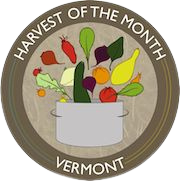The Rise of local Flour in Vermont: Insights from Red Hen Bakery
Randy George, owner of Red Hen Bakery in Middlesex, takes local sourcing very seriously—almost as seriously as his flour. And if you’ve tried their bread, you’ll understand why.
The bread baked at Red Hen sources 99% of its flour from within a 300-mile radius, and much of its whole grain flour is sourced right here in Vermont.
Back in 1999, when Red Hen was just getting started, sourcing high-quality flour in the Northeast was a challenge, largely because of excessive rainfall, particularly during harvest season when wheat needs to dry in the field.
“We couldn't use much more than about 20% in any particular recipe before it started to have negative impacts on the bread,” George commented. He went on to explain how excessive rainfall affected the flour’s ability to rise, making it difficult for bakers to achieve the ideal loaf.
It was around this time that Heather Darby, a soil specialist for the University of Vermont Extension, set out to widely share best practices for growing and harvesting wheat and rye in New England’s unpredictable climate.
Inspired by her friendship with the late Jack Lazor—founder of Butterworks Farm in Westfield and author of The Organic Grain Grower—Heather identified both the challenges and the solutions needed to bridge the gap.
Her approach was twofold.
The 100% Wheat Wheat Loaf fresh from the oven at Red Hen Bakery in Middlesex, VT
The science within a slice
First, the key was identifying wheat varieties with higher protein content. Excessive rain reduces protein levels, and as George explained, “protein in combination with water is what comes together to form gluten.”
Finding varieties resilient enough to maintain sufficient protein for gluten formation was essential to producing high-quality flour.
One such winter wheat variety, Redeemer, contains up to 13% more protein than typical wheat berries. Favored in Quebec for this very reason, it has ancestral roots tracing back to Ukraine.
Second, growers needed to adapt traditional methods to protect their crops from late-season rains, which can trigger sprouting in wheat berries.
“What's happening is all these enzymes get woken up when the seed starts to do its thing,” George explained. “And that's a real problem for bakers.”
To prevent this activation process from occurring in the field, New England wheat growers harvest earlier in the season, allowing the grain to dry without the risk of late-season rains.
A combine harvester in action on Les fermes Longprés in Les Cedres, Quebec.
Thanks to these new practices, George observed a noticeable improvement in the final product. “We [now] have wheat that comes out of Vermont that I'd say is as good as anything that would come out of Montana, Kansas, Nebraska, you name it.”
With 2,200 fresh-baked loaves pulled daily from Red Hen Bakery’s ovens, one could argue that their taste, texture, and quality are world-class.
Yet, sourcing local wheat is just the first step.
Not your ‘run of the mill’ mill
For their 100% Whole Wheat loaf, the milling process is nearly as crucial as the growing process.
For nutrient-rich, flavorful whole wheat flour, nothing surpasses a stone mill. Conveniently, New American Stone Mills—the Rolls Royce of stone mill manufacturers—is based in Vermont.
Since acquiring their own mill in 2017, Red Hen Bakery has provided customers with the benefits of freshly ground whole wheat and rye in several breads.
“Anybody who likes eating food knows, that's where there's fat, there's flavor,” George explained as he began describing the process.
The fat in a wheat berry is stored in the germ—the part of the seed that fuels its growth—but this is removed in refined white flour. A stone mill preserves the germ and the bran—both rich in nutrients—by pulverizing them into the endosperm, which forms the carbohydrate base of the flour.
“As a baker, it makes a world of difference,” George said.
This process ensures that whole wheat flour retains its natural oils, nutrients, and depth of flavor—qualities lost in conventional refining. For George, this attention to detail is what separates an exceptional loaf from an average one.
“When you pay attention to all the things that are involved in making a good loaf of bread—sourcing the grain, milling the flour, and then seeing it all the way through the fermentation process into the final loaves—a bakery that's dedicated to that will do it a lot better than what you can buy in a store.”
Written by Devan Monette
Red Hen Bakery is proof that exceptional bread starts with high-quality, locally sourced ingredients. Want to taste the difference for yourself? Find their fresh-baked breads at retailers near you or visit their café in Middlesex, VT. Check out their full list of locations here: Red Hen Baking Retail Locations.




